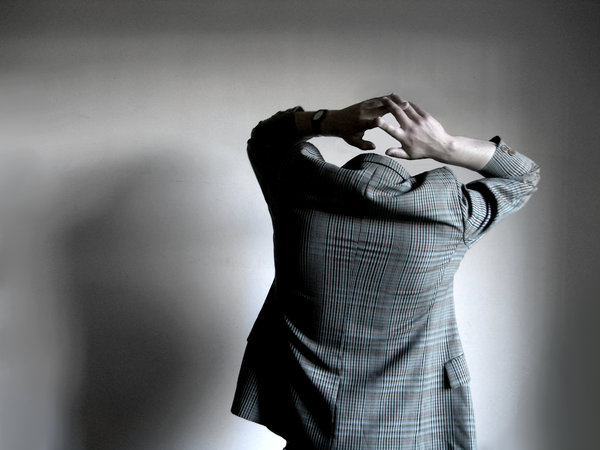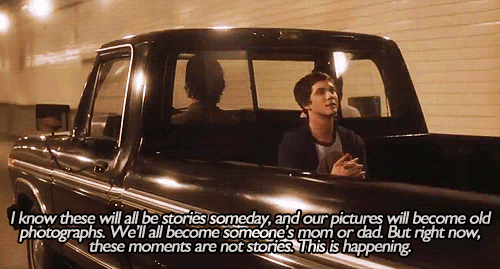Nothing Holy About It by Tim Burkett
(words taken from Tim’s incredible book Nothing Holy About It)
To see the world just as it is, you must relinquish your distorting ideas, views, and concepts. Most of us prefer to limit our experience, to sit in the Chatterbox Café of our mind, where our inner narrator mediates for us. Rather than interacting with the world directly, we interact with our thoughts about the world. In the Chatterbox Café we experience our life as a story narrated by our inner critic.
Letting Go
Zen is about seeing the nature of this mediator and gradually letting it go. In meditation, we learn to open up to our immediate thoughts, sensations, and emotions and see how we react to them.
The problem comes when we don’t want to feel our (longing), so we move away from it. When we try to escape our own heart, we close down, and our life becomes one of isolation and loneliness.
As we befriend the hindrances ingrained in our personality, we will see what triggers them and how they affect our behavior.
In Buddhist thought, we can’t be ripped out of the fabric of the universe because we are the fabric. At the very ground of our being we are pure pristine awareness. This awareness is our basic goodness or Buddha nature.
With practice we begin to empty out, becoming more transparent to the world as it actually is, rather than how we think it is or want it to be.
Emptiness refers to a mind that is open and receptive to whatever is happening.
When tragedy strikes it’s natural to want to close our heart to protect it. But transformation happens every time we’re able to stay open.
Buddha: good in the beginning, good in the middle, good in the end.
The Sanskrit word for trust is shraddha. It’s often translated as “faith” but faith comes with a lot of baggage in Western culture because we associate it with faith in God. Buddha defined shraddha as the type of trust birds have in the tree in which they build their nests.
Longing without aspiration is not enough to free us from our conditioned reality. A key component of aspiration is imagination, the ability to travel beyond our limited experience and see the path of others as possibly our own. Aspiration is not goal setting, or getting something for ourselves or making to-do lists.
Vidya
Vidya is a Sanskrit word with the same root as the English word vision. It means clear seeing, or seeing into or seeing through. When we’re able to experience the present moment directly, without a filter that’s based on our ideas, fears, and concepts.
Moving from avidya (not seeing clearly) to vidya (seeing clearly) is a matter of penetrating the levels of attention that overlay our natural ability to see clearly. The first is the level of ideas, images, memories, and evaluations. Here is where we spend most, if not all, of our time, squandering our attention on surface-level thinking.
We also have instinctual urges that we’re unaware of, and yet they have a lot of force and drive. Below that is the level of our moods, which are subtler and longer lasting. Usually we are unaware that our moods are influencing how we see the world.
The other pitfall is our beliefs. We get thrown off balance so quickly when we stick to beliefs that have been passed down to us. Often our most deeply held beliefs began as practical solutions to specific problems that no longer exist.
Labels are inflexible. They drain away our humanity and the simple joy of being alive. Even positive labels like ‘gifted’ can freeze us up, perpetuate fearfulness, and make us feel isolated and constrained. Our self-image is made up of an array of labels, and rigidities.
Our emotional state is made up of a constellation of feelings paired with our conditioned, instinctual drives. Through meditation we become familiar with these layers and the feeling tones that they arouse in the body. As the mind slows down and clarity arises, the mind naturally frees itself from unwholesome, unhappy states.
Zazen (sitting practice): how to be available, open and resilient.
Freedom comes when we let go of our beliefs and undo the patterns that keep us from being intimate with life.
In Buddhist iconography the key image of someone suffering from avidya is a person with an arrow in his eye. We all have arrows in our eyes. Delusion is the human condition; we all suffer from it, again and again.
Suzuki: Rather than seeing the world as we wish it to be, it’s important that we accommodate ourselves to the world as it actually is.
Stories
We create narratives because we prefer a world that is predictable, structured, safe. Our narrative becomes our identity. According to Buddhist psychology there are three stages to the development of a narrative: experience, perfume and seed. We have the experience, which creates a perfume, an emotional memory. That memory coagulates to form a seed that projects into the future. But with practice we begin to notice when we are watering seeds from the past that will condition and limit our future.
Responding via thought patterns create suffering because we aren’t responding in a way that’s fresh and appropriate. Patterns colour our perception. Even if our thinking works out, it is nevertheless demeaned. Each time we resort to patterned thought, we reinforce the pattern – at the expense of the ever-changing reality right in front of us. As we learn to embrace the unknown, we discover our innate goodness, our so-called Buddha nature. This allows us to trust, to stay open to life, and to experience our own aliveness.
A lot of the time we feel half-dead, so weighed down are we by our fantasies, doubt, regrets. What should I have done? What might have been? We beat ourselves up and project our anxieties into the future. In meditation we practice living beyond our habits of thought. We practice living a life of freedom.
One
Emperor Wu of the Liang Dynasty in China: What is the first principle of your holy teaching?
Bodhidharma: A vast emptiness – with nothing holy about it.
Early Buddhism had little appreciation for nature. It focused on transcending nature. Bodhidharma’s teaching ‘a vast emptiness with nothing holy about it’ cultivated the ground for a fusion with nature. ‘Nothing holy about it’ says: don’t go searching for Buddha nature anywhere else. The truth right before your eyes is all that exists. If your practice is about being holy, you are missing out on life. Don’t try to be a good Buddhist. Just be who you already are. Let go of any ideas about lacking something or attaining something. How could we possibly be more than what we are already? By letting go of our ideas of being holy, we cultivate a capacity to be at home with insecurity. We learn to trust in our basic goodness.
Suzuki: Enlightenment is an accident. Zen practice makes us accident prone.
We express oneness by giving ourselves without expecting anything in return and by receiving without feeling obliged. Then there’s no separation between giver, receiver and gift.
6 realms
Hell realm (anger)
Animal realm (food, sex, survival) (addiction)
Hungry-ghost realm (need)
Human realm (desire: get what I want, avoid what I don’t want)
Fighting spirit realm (jealousy, be the best, pushing ourselves, competing)
God realm (pride, we have everything we want, no striving)
According to Buddhist psychology we constantly move back and forth through these six realms until we learn to recognize them and free ourselves from them. In the three lower realms, we are unable to focus on practice because there’s too much suffering. In the two upper realms: there’s no motivation to practice meditation because things are too good. The god realm works until it doesn’t, it always leads directly to the hell realm.
In meditation it’s easy to recognize what you’re striving for. When you’re trying to follow your breath but keep finding yourself lost in thought, what is the theme? Move into it with bare awareness instead of letting it carry you off. Identify which realm it’s coming from. Stay with the unpleasant sensations. What emotions come up? An emotion is the product of a multitude of sensations.
Through continuous practice, the realms become more nuanced and fluid. When we learn to hold our thoughts lightly, it’s possible to express our multiplicity of selves without being dominated by them. It’s possible to move freely between them without feeling trapped or confused. We can honour our many selves as they come up. We don’t have to look for the real self or try to express only the good self, the accomplished self, or the calm self. Rumi: Half of any person is wrong and weak and off the path. The other half is dancing and swimming and flying in the invisible joy.”
Fear
The fear body can manifest in three common ways. The first is withdrawal. When I was labeled as gifted at three years old I began to contract around the idea of being gifted. As adults we contract around our strongly held opinions. We can try to force our stories onto others.
The second manifestation of the fear body is lashing out, either in anger or through competition, always needing to be better.
The third manifestation of the fear body is going numb. We numb out through alcohol, drugs, sex, gambling, TV, workaholics.
In meditation it’s ok to feel all of your intense emotions, feel the sensations, even of murderous rage, breathe into it, and allow it to pass on without turning it into stories. Stay with sensations, with the direct experience of our emotions, then we don’t need to act on them. We transform their negative energy into positive, constructive energy. But first we have to become an expert on our fear. Not fear in general but our own fear. Fear is not something remote to be studied, it’s immediate, if we can experience fear directly, in a clam and kind way, it loses its power.
From birth to death we are being imprinted by our environment. Fear is unavoidable, it is imprinted on us by family and culture. RD Laing: The range of what we think and do is limited by what we fail to notice.
It is contrary to the nature of the fear body to extend itself. It can only contract, making us feel tight and small. We react to the fear body by clinging and holding on to things. We hold on to time, money and status. We have no time to spare, no money to donate, we rarely do what we really want. When the fear body is present, the first thing that goes is generosity, because sticking and clinging are the opposite of generosity.
When a hindrance (sensual desire, ill will, sloth, worry, doubt) arises, it’s usually covering some basic fundamental fear. We hold on to it because it’s preferable to fear. But clinging to a hindrance causes us to lose our centre. We become unsteady, as if were skating on ice. In a sense, we are skating on ice because the hindrance creates an icy sheath over our fear and protects us from it. We don’t want to break through. But we are separated from our life, our vitality. Training with the hindrances is about breaking through the ice and meeting what it is that isolates us.
When I was a student at Stanford, Suzuki Roshi was invited there to speak. I sat next to him in the first row as he waited to be introduced. Suddenly, he took my hand and squeezed it. “I’m scared,” he uttered. But when it came time for his talk, he was calm and totally available. He did not fear the sensation of being scared. He didn’t contract around it or cling to it. When it arose, he acknowledged it and felt it fully, and it passed on through. He freed up the energy of fear, so it could be transformed. He met fear with kindness, and then he was free to give himself wholeheartedly to his activity.’
What if I completely let go of the fear body and were released from the gloomy future it predicted? What would I want my life to be about? As we ask these questions and feel the resistance they arouse, we begin to recognize how hypnotized we are by the fear body. Once we learn to recognize how fear drives our choices, we can choose differently. Deep questioning can help us to break through the hypnotic spell fear casts. We can practice deep questioning the same way we practice returning to our breath in meditation. When we bring our awareness back to the question over and over, the question sinks deeper into our skin. Deep questioning extends us beyond the fear body. Just holding the question is enough, because it is the question – not the answer – that opens us up. Answers can be sticking places. What is the most important thing to do?
When we notice we are thinking about our fear rather than experiencing it directly, we bring ourselves back to our immediate sensations. Over and over, we abandon our thoughts and move our awareness back into our body. When we lose our fear of the sensations, we are no longer bothered by fear.
Suzuki: When you do something without any thought of doing something – that is you yourself. Whatever bird flies through the sky, the sky doesn’t care. When we experience Big Mind, we are as open as the sky. Our thoughts are little birds. When we extend ourselves in this way, the fear body dissolves. It always comes back, but that’s ok. We’re not bothered by it.
Eightfold Path
Buddha offered very clear instructions on how to keep the doors of perception cleansed. His eightfold path describes eight elements or aspects of an awakened life. It begins with an understanding and acceptance of interdependence. There is no other, or something else. Interdependence is deep ecology. The second aspect is an intention to apply this understanding to our daily livfe. These first two elements involve faith – not faith in anything in particular, not a faith that we can cling to, just moment-to-moment faith in an interconnected universe.
The next three aspects of the path involve ethical behavior. The third focuses on speech, which refers even to the Chatterbox Café in our own heads. In dealing with others, what is the intent behind our words? Are we seeking to illuminate or conceal? Are we using skillfull means or just venting? Are we being upright and honest in our expressions? These questions require honest inquiry.
The same kind of inquiry is applied to the fourth element of the path, appropriate action, and also the fifth, which involves appropriate livelihood. Are we engaging in activities and jobs and support Buddhist values and ethics? Non-harming, honesty, non-stealing.
The last three steps on the path concern meditation. The six is effort. It takes relentless and diligent effort to maintain a sincere meditation practice. The seventh, mindfulness, is the energy that keeps bringing us back to the present moment. The eighth is concentration, which brings one-pointed focus into our meditation and builds inner strength.
Sometimes we get stuck on the path and lose our aspiration. Go back to the first step, focus on your understanding of the teaching that everything is interdependent. It doesn’t matter how often you return to the first step. There’s a saying in Buddhism, that if we pull a single thread, the entire universe comes along.
Five Hindrances
(that point the way)
Sensual desire, ill will, sloth and torpor, restlessness/worry, doubt.
Sensual desire has to do with the immediate gratification of our appetites and senses. The best-kept secret about desire is what actually relieves it. We think our desire is relieved by getting what we want. But our new possession is not the source of our relief. The relief comes because the state of desire has ended. We are freed from the painful sensation of desire. The temporary relief by fulfilling the fantasy reinforces the cycle of desire. Instead we could interrupt the circle by going for a run, or meditation or any activity wholeheartedly undertaken that will break the fixation.
The four mindfulness practices in the Satipatthana Sutra teach us how to move our attention around so we discover where we are harboring ill will. Is it in our bodily sensations, our feelings, our thinking, our fundamental attitude? How to bring kindness to our ill will?
Sloth and torpor. We feel energized when we’re doing something that we desire or getting away from something for which we have ill will. When the self has nothing to do with desire or aversion, we may feel dull or bored. Sometimes sloth is used to cover up what we don’t want to face. If you have sloth investigate it. What do you want to do with this short life?
A key aspect to restlessness is worry – concern about out uncertain future, failures, shame, guilt, regret. Trying to put aside our worry doesn’t generally work. But we can open up to it, feel it physically, watch its movements in the body, and observe what triggers it. In many cases worry can be managed through exercise, getting enough sleep, ethical behavior. When worry is present our meditation needs to be more about letting go than about striving. If we crit our meditation, we are just creating something else to fret about. Judging makes us restless. Let worry come, then notice how it feels, and the moments when it is not present.
The hindrances reveal our darkest places. Fear is always present. A reconciliation with ghosts (the dark night of the soul (Saint John of the Cross). In zazen our one-pointed focus is like a flashlight. It doesn’t illuminate the whole cave at once, that would freak us out. Openness without a perimeter can be frightening. The flashlight narrows our awareness, giving us time to ease into the dark places at our own pace.
We stay connected to the world by what we do, not what we think.

![anya schiller 6[3]](http://mikehoolboom.com/thenewsite/wp-content/uploads/2016/05/anya-schiller-63.jpg)

![anya schiller 5[3]](http://mikehoolboom.com/thenewsite/wp-content/uploads/2016/05/anya-schiller-53.jpg)


